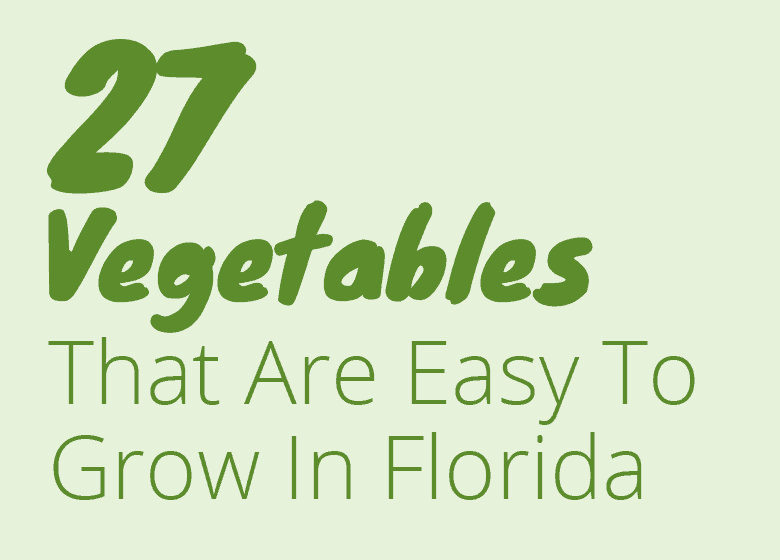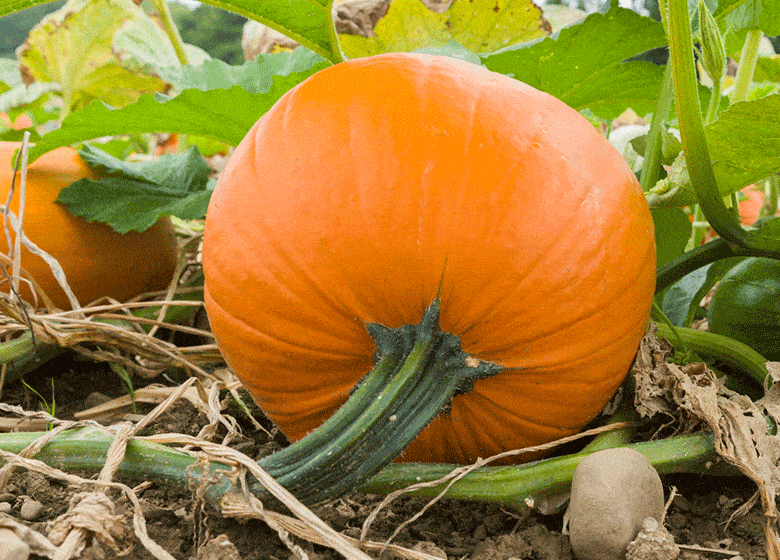
Wondering if it’s easy to grow pumpkins in Florida?
To grow pumpkins in Florida you can plant seeds in March and August. The easiest pumpkin to grow in Florida is the Seminole pumpkin. You must have several feet (6′-12′ and sometimes more) of space to grow these plants. Big Max, Big Moon, Howden, and Jackpot are other varieties that you can try to grow as well.
Many gardeners in Florida find most pumpkins difficult to grow, with the exception of the Seminole pumpkin which grows really well in Florida during the summer.
How do you want to use your pumpkin? are looking to grow a massive 200-pound pumpkin for show? or are you looking to grow pumpkins to carve for Halloween? Maybe you just want some good homegrown pumpkin pie. Read on to find out which varieties are best for what.
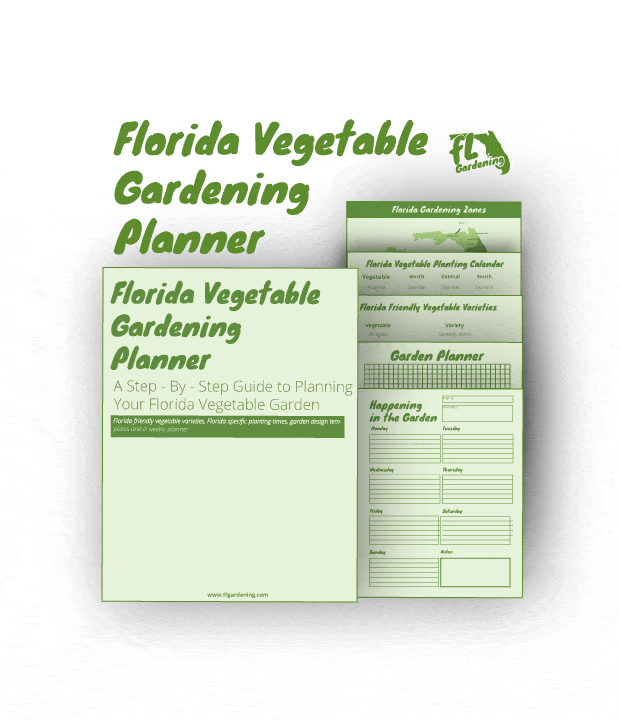
Get your Free Florida Vegetable Gardening Guide.
Pumpkin Varieties
Hands down, the easiest pumpkin to grow in Florida is the Seminole pumpkin.
As mentioned above, there are a few different kinds of pumpkins that we can grow in Florida. Some are good for eating, while others are good for ornamental reasons. here are a few more varieties.
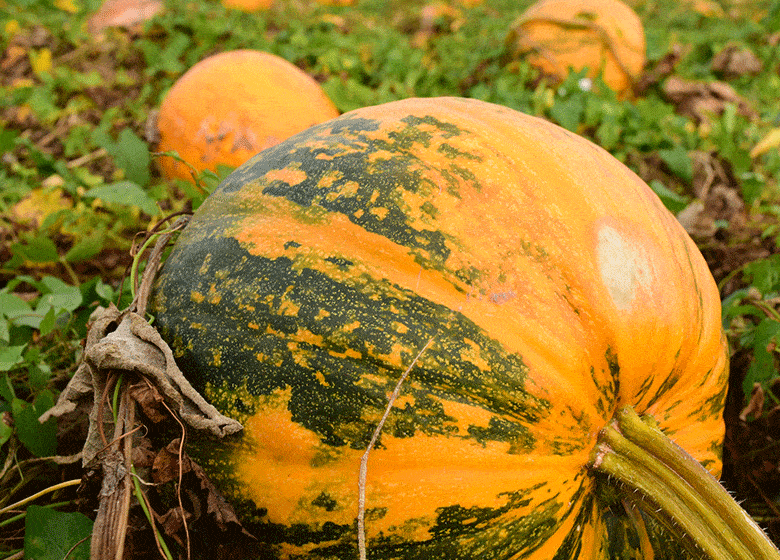
Best Edible Pumpkin Varieties for Florida
- Cinderella
- Cheese
- Jack Be Little
- Kentucky Field
- Munchkin
- Seminole Pumpkin
- Small Sugar
- Spookie
- Winter Luxury
Edible pumpkin varieties are good to eat baked or turned into pie. Small sugar is probably the most popular pumpkin pie variety on this list.
Seminole pumpkin is great when halved and stuck in the oven to roast up.
Jack Be Little and Munchkin varieties are like those little tiny decorative pumpkins that little kids usually go crazy for.
Best Ornamental Pumpkin Varieties for Florida
- Atlantic Giant
- Big Max
- Big Moon
- Connecticut Field
- Howden
- Jackpot
The most popular carving pumpkin to grow is the Connecticut field variety. When you think of a common, everyday pumpkin this is what you are picturing. Howden and Jackpot are also good carving pumpkins.
Atlantic Giant, Big Max, and Big Moon can all grow very large. Atlantic Giant has been known to grow up to 200 pounds!
When To Plant Pumpkins In Florida
Planting pumpkins in Florida is done two times. Once in the spring and once again in the early fall.
| North Florida | March & August |
| Central Florida | March & August |
| South Florida | March & August |
If you’re looking to have these pumpkins ready for a Halloween harvest, you would need to have seedlings in the ground by the first week of July. This is a difficult time to grow vegetables in Florida. Growing pumpkins to have ready for Halloween can prove difficult but not impossible.
The above dates are just guidelines and may change from year to year. You are looking to have at least a 4 month stretch of weather where freezes and heat waves aren’t the norms. If we have a particularly warm year and you think the fear of all frost is gone by February, then I would say trust your gut and plant your seeds.
Growing Pumpkins in Florida
It’s hard to imagine that this tiny pumpkin seed you hold in your hand will soon be a plant that will cover your entire back fence line. Pumpkin plants grow really large. There are lots of youtube videos of people showing their pumpkins vining out and taking over a fence that is 30 feet long!
In order to grow pumpkins, you will need a large space that gets 8+ hours of sun. The more sun the better.
Pumpkins are a bit picky when it comes to soil. Like most plants, they enjoy nutrient-rich soil with plenty of aeration and water retention.
However, pumpkin plants do not enjoy having their roots drenched. If your soil gets a bit waterlogged you can probably kiss your pumpkins goodbye.
Seminole pumpkins are the most drought-resistant plant on this list. All other pumpkins will require regular watering.
Pumpkin plants produce both male and female flowers on the same plant and they do require bees and other bugs to pollinate the flowers. Be sure you’re attracting plenty of good bugs to your garden.
Fertilizing
The easiest way to fertilize pumpkins is with a well-rounded fertilizer. Something like a 10-10-10 will do just fine. However, if you are going for a record-setting size pumpkin you might want to optimize fertilization.
Before flowers and fruit set it’s best for your plant to boost its green leafy growth. Nitrogen helps your plant grow its leaves.
My favorite nitrogen focused fertilizer is liquid kelp or fish fertilizer. After fruit and flowers begin to set it’s a good idea to cut back on the nitrogen fertilizer. Your plant now needs to focus on fruit growth. look for a fertilizer that has higher phosphorous and potassium values.
Harvesting
Pumpkins take about 4 months (approx. 100 days) in order to produce a ready to harvest product.
It’s hard to give one exact thing to look at when checking for ripeness because there are so many different kinds of pumpkins. Some pumpkins are green and some are orange and some are a weird mix of both sp color is a difficult indicator to use.
Another thing you can look at is the thickness of the skin. push on the outside of the pumpkin with your thumb. If it is difficult to punction your pumpkin might be ready for harvest.
You can also take a look at the stem. If it begins to turn brown that is another indicator that your pumpkin is ready for the picking.
Pumpkin Pests and Diseases
Thew most common problems for pumpkins are leaf spot diseases, downy mildew, powdery mildew and wilt diseases.
The most common pests for pumpkins are Aphids, Cucumber beetles, and a few types of caterpillars.
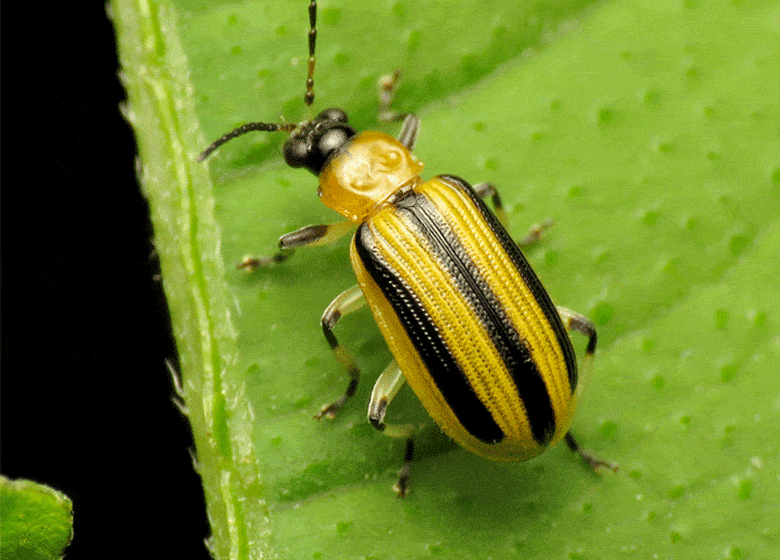
The best way to avoid these diseases is by making sure the leaves stay dry and warm. Lots of leaf spot diseases and mildews happen because the bacteria has a cool and wet environment that it will thrive in. If chemical control is necessary you can use a copper fungicide.
For aphids you can use neem oil, for Caterpillars you can use B.t. and for beetles, you can use Kaolin clay.
How To Grow Pumpkins In Florida
- The best time to grow pumpkins in Florida is March & August.
- Seminole pumpkin will be the easiest pumpkin to grow in all parts of Florida. Big Moon, Howden, and Jackpot are other varieties you can try to grow as well.
- Plant in full sun and organic-rich soil.
- Pumpkins need at least 6′-12′ of space to spread out.
- Harvest approximately 4 months after planting. You need bees and other pollinators to pollinate your plant.
- Keep a lookout for leaf spot, mildew and wilt diseases. Also watch for pests like aphids, caterpillars, and cucumber beetles.
You Will Probably Also Like
